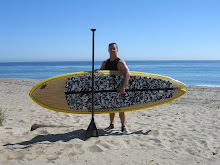1. Warmup
2. Stretching/Flexibility Training
3. Core Training
4. Strength Training
5. Power training
6. Flexibility Training/Stretching/ Cooldown
7. Cardiovascular Training
1. Warmup
Typically, I ask people to get on the treadmill for 5-10 minutes for a warmup just to get the blood flowing and get the cardiovascular system working. When I was in gymnastics, we used to jump on the trampoline for 10 minutes before moving on to stretch.
2. Stretching/Flexibility Training
Once you are warmed up a bit, it is a good idea to get stretching. Stretching is really important to keep all length-tension relationships in check, prevent injuries, and it actually is vital for optimal performance.
3. Core Training
What good are strong branches without a solid trunk? When the wind comes, a strong trunk is the only thing that will keep the tree from breaking. I'm not sure about the analogy either, but the point is that you must keep your core strong in order to get your whole body stronger. If you cut your arms and legs off, you have your core left. It is basically all the muscles surrounding your spine. You can train your core by doing unstable exercises that require you to coordinate all your muscles around your spine to support it. The Swiss ball, TRX, and Indo Board are probably your best tools for core training.
4. Strength Training
Typically your strength training regimen will consist of 2 to 5 sets of 8-15 reps. Most beginners will start with 2 sets of 15 reps, while athletes may do 5 sets of 8 or a combination of pyramiding, stripping, and other advanced techniques. Strength training doesn't have to be just with weights and can consist of core training exercises. For example, pushups on the ball are a strenght training exercise and it simultaneously works the core. I prefer to integrate core exercises into my strength training program.
5. Power Training
Power training is vital for athletes who need to be fast, agile, strong, and, of course powerful. It is done by doing low reps, heavy weights, and rapid tempo. It is NOT necessary for the average Joe getting in shape. It may compromise your joints and you can risk injury if these exercises are done with improper form.
6. More Stretching
It is a good idea to reduce soreness by stretching after exercise. You can also increase your flexibility the more you stretch. Static stretching is good after exercise, as is foam rolling and dynamic stretching.
7. Cardiovascular training
I personally like to ride the bike for a couple hours for my cardiovascular training. We live by many hills, so intervals are naturally built in to my cardio program. Ideally you should be doing at least 20 min. of cardio per day, but more is better to a certain degree. Cardio should be challenging, getting your heart rate up and breathing heavy.
For most people, 2-3 days per week of flexibility/strength/core training for an hour is a good idea, while doing cardiovascular training 5 days per week for 20-60 minutes would be a very healthy lifestyle.
Any thoughts?
Jon










No comments:
Post a Comment